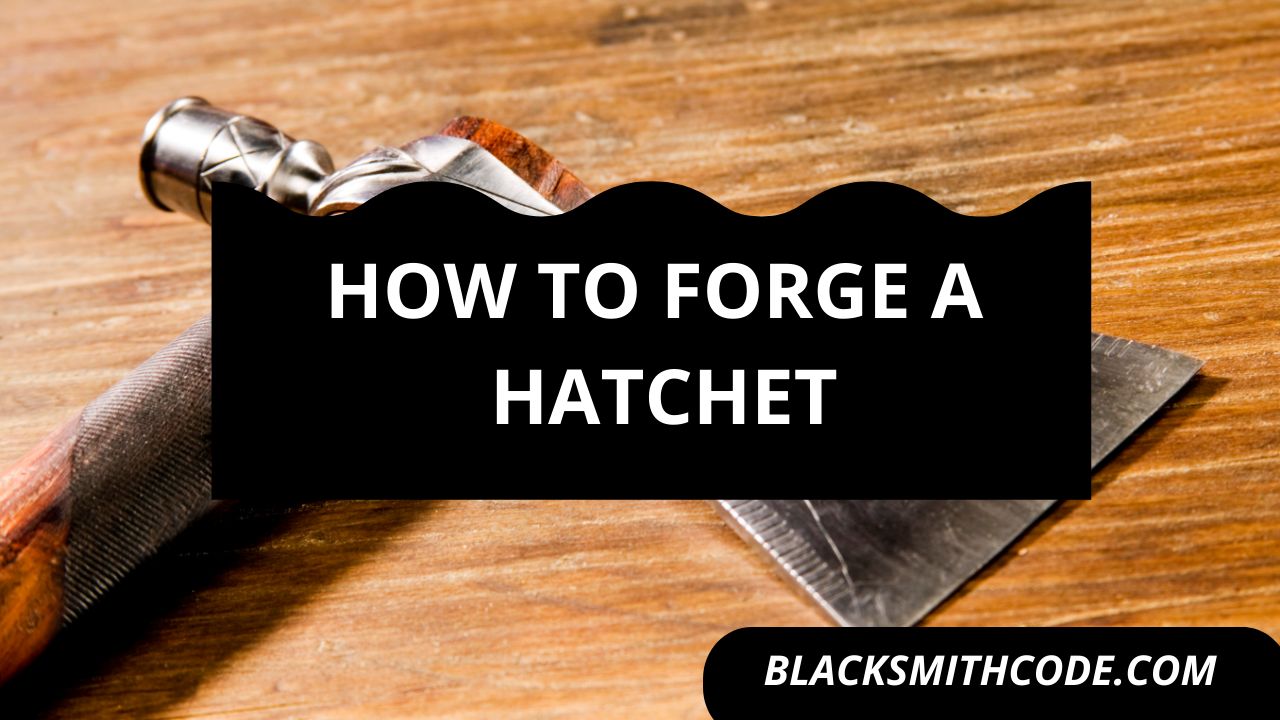Do you think forging a tool as essential as a hatchet is difficult? Definitely not! By following few steps, you can forge your preferred hatchet.
The hatchet is a small hand tool with a combination of a hammer and an axe. The hatchet’s structure defines these two tools making the hatchet a handy tool that is helpful in different fields.
Hatchets are basically made from metals. The blade of the hatchet comprises the parts of two tools; an axe blade and a hammer’s head. The hatchet is useful in cutting things like woods, and it is also helpful in shaping, driving, and beating objects.
To forge your hatchet, you should follow the steps below;
Instructions
Step 1: Get Your Materials
Before you start forging your hatchet, you need to have your materials ready and intact. The material you get is what you will forge your hatchet from, so you should be conscious of the material you choose.
For your blade, you should make use of steel to forge it. Steels form harder and tougher blades than most metals. You can also make use of wood or plastic as the handle.
Besides getting your materials, you should also get your tools ready. It would be best if you got the appropriate tools to forge the hatchet easily.
Step 2: Get The Design For Your Hatchet
Every great project has an architectural plan. This plan serves as the template for the hatchet. Just like every architectural scheme, you should prepare the design for your hatchet before you start forging.
Pro Tip
The way your forged hatchet will look like will depend on the design you have for it. It is advisable to get your design ready so that you can make some corrections to it if it doesn’t suit the best hatchet you want.
Step 3: Heat Your steel
You should place the metal you intend to forge your hatchet from in a forge for heating. It would be best if you heated the steel till it became red hot. This act will make steel malleable and easy to forge.
You might have to heat the steel for a very long time before it becomes red hot. This process might take longer or sooner when you use other metals depending on the nature of the metal you use.
Step 4: Forging Your Blade
After heating your steel to a red-hot state, you should place the hot steel on an anvil for forming. Forging means shaping your material into what you want. So, this step requires you to shape your hot steel into your hatchet.
Common Techniques
There are different ways of forging a hatchet blade. Here, we will be using the most common technique.
- Heat a bulk of steel until it becomes red hot.
- Fold the steel to make the two ends meet. Be careful while folding because you must have an even end.
- Remember to insert a rod to maintain the shape of your eye drift. The eye drift is where you would be adding the handle. Also, the size of the rod will determine the size of the eye drift.
- Start hammering the end of the blade.
- The intensity of the hammering should decrease progressively towards the drift eye.
- The focal point of hammering should be the sharp edge.
- Hammer it until the two parts blends to become indistinguishable from each other.
- Keep hammering until the edge becomes flat.
- Be careful not to distort the shape of the drift eye. Also, you can reheat the steel as often as needed till you have a near perfect shape.
This process might be tedious and gradual. Forging the steel will be a lot easier when the steel is hot because heat softens steel making it easy to forge into different shapes.
Step 5: Grinding and Sharpening
After finishing with the forging, you can now proceed to grind and sharpen your blade. Forging the blade has to have two parts, a sharp blade part that resembles the blade of an axe and a hammerhead part.
Quick Steps
- You should grind and sharpen the blade with the appropriate tool. You can make use of a standard and angle grinder to grind and sharpen the blade.
- Grind until you have a smooth edge. However, the edge should not be too thin to prevent it from melting off during hardening and tempering.
Step 6: Reheat And Quench Your Blade
It would be best if you reheated the blade after you are through with the grinding and sharpening. You will have to place the ground blade into the forge to heat it once again.
You will have to heat the blade for a long time and let it cool rapidly or slowly. This act will help harden the blade and make it tough. After heating the blade, you should dip the blade into a quench liquid. The quench liquid can either be oil or water.
Dipping the blade into a quench oil also constitutes the factors that increase its strength and toughness.
Step 7: Finishing
The finishing is a straightforward stage in forging a hatchet. The finishing consists of polishing and adding a handle to the hatchet’s blade. Polishing the hatchet blade is simple, and you can perform this in a few minutes.
You should also add the handle to the blade. Attaching the handle to the blade is also a simple and straightforward step.
FAQs on How to Forge A Hatchet
Question
What is the difference between an axe and a hatchet?
Typically, a hatchet is a smaller version of an axe. You can use the hatchet with one hand while you have to make use of your two hands to use an axe. The hatch usually has a hammerhead as part of the blade while the hatchet does not.
Question
What is the difference between a machete and a hatchet?
Another name for a machete is cutlass. A machete is a cutting tool that looks like a more extended version of a knife, while a hatchet is a smaller version of an axe.
Question
Can a hatchet be as useful as an axe?
Yes, you can use a hatchet as you can make use of an axe. The hatchet is smaller and very handy, which makes it easy to use. The hatchet can also do some of the jobs of an axe.
Video on How to Forge A Hatchet
Warnings
There are precautions you must take before, during, and after forging. These precautions include the following;
- Always make use of the appropriate tools and equipment.
- It would be best if you were careful when handling a hot substance.
- You must always put on protective clothing.
- It would be best if you had provisions for precautionary measures.
- Always follow safety rules and regulations.




